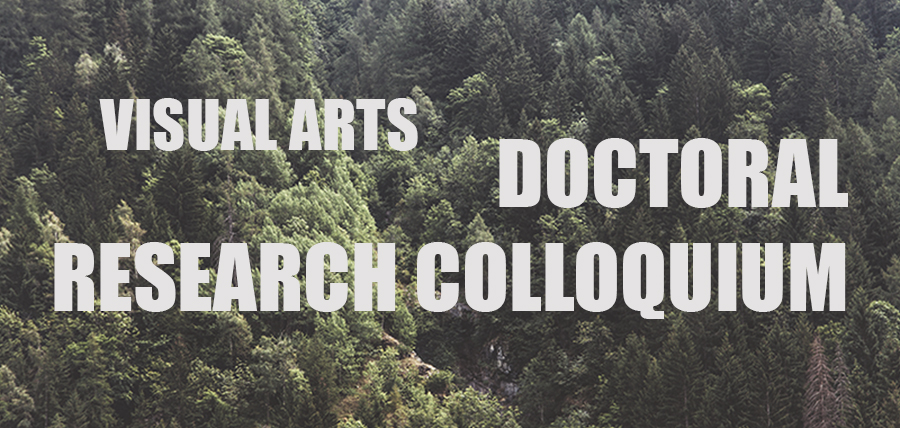Doctoral Research Colloquium
Keynote: Professor Jennifer Doyle, UC Riverside
March 1, 2024
10:00 a.m. - 4:30 p.m.
Structural & Materials Engineering Building, SME 149, UC San Diego
Free & Open to the Public!
The Doctoral Research Colloquium features talks by PhD students who have recently advanced to candidacy along with a keynote lecture by a speaker who has influenced their practice. The colloquium is a public forum where the excitement and energy of newly launched dissertation projects are shared with the broader local community through sustained dialog with a senior scholar in the field.
10:15 a.m. - Opening Remarks
10:30 a.m. - Keynote Lecture: Professor Jennifer Doyle, UC Riverside
11:30 a.m. - Coffee Break
11:45 a.m. - Panel 1: Wanshi Ma, Wei Wu (Maggie), Ning Zhang, Professor Kuiyi Shen (Respondent)
1:00 p.m. - Lunch
1:45 p.m. - Panel 2: Fabiola Carranza, Hande Sever, Professors Malik Gaines and John C. Welchman (Respondents)
2:45 p.m. - Coffee Break
3:00 p.m. - Roundtable Discussion
4:15 p.m. - End
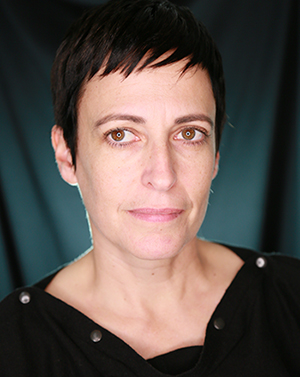 Jennifer Doyle, a Professor of English at UC Riverside, is the author of Hold It Against Me: Difficulty and Emotion in Contemporary Art (2013) and Sex Objects: Art and the Dialectics of Desire (2007). She is the author of Campus Sex/Campus Security (2015) and co-editor of Pop Out: Queer Warhol (1996). She guest-curated Nao Bustamante: Soldadera (2015) for the Vincent Price Art Museum, and worked closely with the artist in developing that project (which makes extensive use of archives housed at UC Riverside). She guest curated The Tip of Her Tongue, a seven-performance series for The Broad Museum (2015-2017), and I Feel Different, a group exhibition for LACE (2010). In 2018, she curated Ron Athey’s Gifts of the Spirit, working with producing partners Volume and The Broad, and co-curated Aqui No Hay Virgenes: Latina Lesbian Visibility for the Advocate Gallery and LACE (2007). She is a member of the Board of Directors at Human Resources Los Angeles, and is an active member of that organization’s curatorial team. She is the 2013-2014 Distinguished Fulbright Professor at the University of the Arts, London, and is a recipient of an Arts Writers Grant.
Jennifer Doyle, a Professor of English at UC Riverside, is the author of Hold It Against Me: Difficulty and Emotion in Contemporary Art (2013) and Sex Objects: Art and the Dialectics of Desire (2007). She is the author of Campus Sex/Campus Security (2015) and co-editor of Pop Out: Queer Warhol (1996). She guest-curated Nao Bustamante: Soldadera (2015) for the Vincent Price Art Museum, and worked closely with the artist in developing that project (which makes extensive use of archives housed at UC Riverside). She guest curated The Tip of Her Tongue, a seven-performance series for The Broad Museum (2015-2017), and I Feel Different, a group exhibition for LACE (2010). In 2018, she curated Ron Athey’s Gifts of the Spirit, working with producing partners Volume and The Broad, and co-curated Aqui No Hay Virgenes: Latina Lesbian Visibility for the Advocate Gallery and LACE (2007). She is a member of the Board of Directors at Human Resources Los Angeles, and is an active member of that organization’s curatorial team. She is the 2013-2014 Distinguished Fulbright Professor at the University of the Arts, London, and is a recipient of an Arts Writers Grant.
Wanshi Ma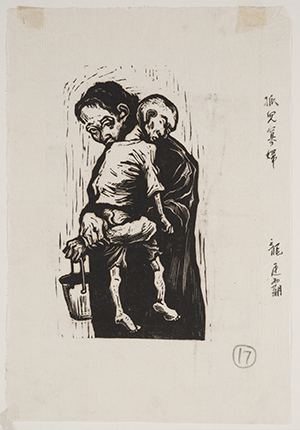
From New Woodcuts to Propaganda Posters
Characterized by its widely accessible, democratic, and affordable form, reproducible art, such as prints and posters, comprises a significant portion of public art in modern China. This study looks at modern woodcuts as a genre across distinct historical contexts in China, beginning with the outbreak of the Sino-Japanese War in 1937. During this time, woodblock prints, defined by their opposition to a corrupt state and sense of social awareness, emerged as the principal medium for depicting war-related imagery. This research further explores how these woodcuts transformed into active tools of social agitation and eventually evolved into propaganda posters, playing a major supporting role in many campaigns throughout post-1949 China. By examining the transformation of the medium from limited tonalities to bright colors, and from scenes of death and famine to joyful depictions of bumper harvests, this research highlights the versatility and resilience of modern woodcut art and suggests a shift in emphasis from national salvation to regime consolidation.
Respondent: Professor Kuiyi Shen
Biography: Wanshi Ma is a doctoral candidate in art history, theory, and criticism. Her research focuses on modern printmaking culture in early twentieth-century China. She received her BA in art history from New York University and MA in art history from Columbia University.
Image: Long Tingba, Orphan and Widow, ca. 1942. Image source: Herman Collection of Modern Chinese Woodcuts, Colgate University
Wei Wu (Maggie)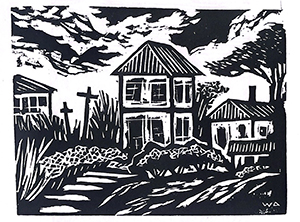
Woodcut as Cathartic Release: An Alternative Origin of the Modern Prints Society
Different from traditional woodblock printing, creative woodcuts, which were first developed in Europe in the early twentieth century, require artists to carve and print their own blocks. Introduced to China in 1929, the practice swiftly captivated young art students, who turned to this new medium despite their rigorous training in oil paintings and ink paintings. What attracted them to the woodcut medium? Drawing on the experiences of the founders of the Modern Prints Society, Li Hua and Tang Yingwei, this talk contends that they sought in the woodcut art not its ideological significance as either political or artistic avant-garde, its distinctive technique and emotional resonance. Li Hua took up the arduous task of carving as a means to navigate his grief after the loss of his wife, while Tang Yingwei turned to woodcutting due to his frustration with the ink painting curriculum at the Guangzhou Municipal Art School. For both artists, creative woodcut offered a cathartic release, an intimate experience often overlooked in the politically overdetermined discourse about the medium and its practitioners.
Respondent: Professor Kuiyi Shen
Biography: Wei Wu (Maggie) is a doctoral candidate in art history working on modern Chinese art, visual culture, and intellectual history. Her research investigates Chinese artists responded to local challenges against an international cultural discourse. She obtained her MA degree from Williams College and the Clark Art Institute.
Image: Fuyun (Floating Cloud), Li Hua, 1934. Image source: The Progress of Woodcuts: The Complete Woodcut Collection of Lu Xun (Banhua jicheng: luxun cang zhongguo xiandai banhua quanji), vol 3, 1991
Ning Zhang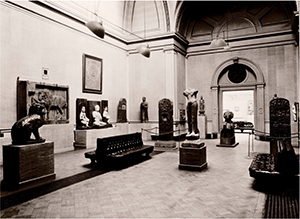
Chinese Art Criticism in the Writings of Roger Fry and Laurence Binyon
Roger Fry (1866–1934) and Laurence Binyon (1869–1943) were two of the most important British scholars who introduced the arts of China to a Western audience in the early twentieth century. While a few studies have tried to explore how Fry and Binyon shaped the reception and collecting of Chinese art in Western Europe between the 1900s and 1930s, scholars have yet to provide a detailed account of the intellectual background of their critical writings. For example, how did Fry analyze early bronze vessels, jades, stone sculptures, and murals in relation to his knowledge of the Old Masters and his promotion of Post-Impressionist painting? In what ways did Binyon interpret the philosophical undertone of the Song landscapes based on his lifelong engagement with the Romantic poetry? How did Fry, Binyon, and contemporary Sinologists, art scholars, and writers influence each other in their aesthetic appraisals of Chinese art? In what ways did the affinities and differences between their approaches contribute to the development of Chinese art historiography? My dissertation seeks to understand the origins of the critical vocabularies adopted by Fry and Binyon and how their writings placed Chinese art within some of the larger debates of art history.
Respondent: Professor Kuiyi Shen
Biography: Ning Zhang is doctoral candidate in Art History, Theory, and Criticism at UC San Diego. Her research focuses on East Asian Art Historiography at the turn of the twentieth century. She previously studied at The Ohio State University and Columbia University.
Image: International Exhibition of Chinese Art, Burlington House, London, November 1935–March 1936. Image source: Royal Academy of Arts.
Fabiola Carranza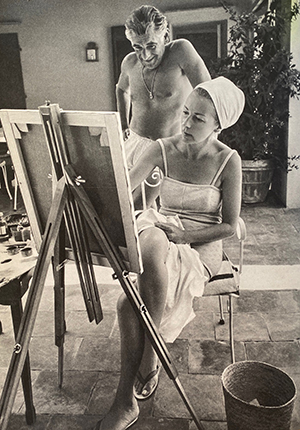
What Ever Happened to Felicia Montealegre?
My dissertation on Felicia Montealegre (1922-1978) examines her life through archival interrogation, interviews with her friends and an exploration of her surviving artwork. Montealegre was the first chair of the Women’s Division of the New York Chapter of the American Civil Liberties Union. She also cofounded the anti-war organization Another Mother for Peace and was a member of the Citizen’s Inquiry on Parole and Criminal Justice, Inc. She studied theater under Herbert Berghoff at the Dramatic Workshop of the New School for Social Research, performing on various plays on Broadway. In 1949, she was recognized with a Motion Picture Daily Award for Most Promising Female Star from the US and Canadian Television Editors of Fame Annual Television Poll, after appearing in a handful of television films. Montealegre married the composer and conductor Leonard Bernstein in 1951 and they raised a family together. By the mid-sixties she had a studio and took painting lessons with members of the New York School. My presentation will offer an introduction to her life, focusing on her paintings and activism as these relate to social debates on representation in the media, class, race, gender and sexuality.
Respondent: Associate Professor Malik Gaines
Biography: Fabiola Carranza is an artist, educator and Ph.D. candidate in Art Practice at the University of California San Diego. She/they is an affiliate of the Critical Gender Studies Program, a Katzin Fellow, and a Black Studies Project Awardee. Carranza’s artwork has been exhibited in Canada, México, Costa Rica and the U.S. Her/their writing has appeared in Canadian Art, Public Parking, Charcuterie, C Magazine, PubLab and The Capilano Review. Carranza’s play, The Mexican Husband (2019), was published by Blank Cheque Press and has been staged as a reading-event at the 3rd Kamias Triennial in the Philippines (2020), at Artspeak in Vancouver (2019), at Deslave in Tijuana (2018) and Vinegar Contemporary in Birmingham, Alabama (2022). Carranza’s dissertation focuses on the art and life of Felicia Montealegre.
Image: Felicia Montealegre and Leonard Bernstein, Ansedonia, Italy, 1967. Photograph by John Jonas Gruen.
Hande Sever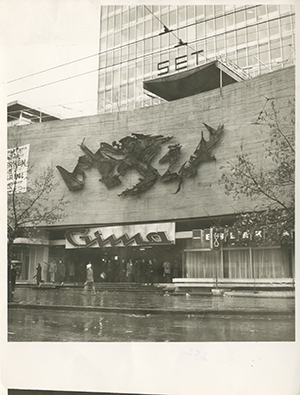
Aridification as the Protagonist: Kuzgun Acar's Ecocritical Practice
Sever’s dissertation research focuses on public artworks that were demolished by military governments in Turkey. Analyzing which public artworks are incorporated into the Turkish state’s fold as opposed to ones that became targets of demolition and neglect, her research aims to uncover the mechanisms through which the Turkish state determined the visual reality of its own public sphere. In her forthcoming talk titled "Aridification as the Protagonist," she will focus on the oeuvre of Kuzgun Acar (1928-1976) and his public sculpture Türkiye Rölyefi (Relief of Turkey, 1967) destroyed in the aftermath of the 1971 and 1980 Turkish military coups. Tracing the genesis of Acar’s work back to his early experiments with welded scrap metal sourced from shipyards in Istanbul. Sever’s discussion unveils an ecological concern within Acar’s practice, emphasizing bodies of water as both contested sites of labor and endangered resources. She examines Acar's artistic exploration of the modernist relationship between a work’s materiality, its representational strategies, and its political discursive charge. Drawing on her archival research, Sever further explores the legacy of Türkiye Rölyefi and discusses how its destruction by the military coup government was inscribed within a modernizing political framework of environmental destruction, driven by rapid industrialization and the swift construction of hydropower generation projects. This examination sheds light on the intertwined dynamics of art, politics, and environmental consciousness, offering a nuanced understanding of Acar's work and its contextual implications within Turkey's historical and political landscape.
Respondent: Professor John C. Welchman
Biography: Hande Sever is a research-based artist and scholar from Istanbul, Turkey. Her research concerns theories of sovereignty and biopolitics with a focus on the role of arts in resistance practices from West Asia. Her areas of specialty include the visual cultures of contemporary and modern West Asia and its diasporas, colonial studies and traditions of materialist thought. Sever has published her critical and scholarly writing in the Getty Research Journal, the Stedelijk Studies journal, MARCH Journal of Art & Strategy, World Art journal, Frieze, and X-TRA Contemporary Art Quarterly, among others. Her research-based works have been supported by grants from the Félix González-Torres Foundation, California Arts Council, J. Paul Getty Foundation, Henry Luce Foundation, and the Hrant Dink Foundation. Additionally, her dissertation work at UCSD has received support in the form of fellowships from UCSD’s Black Studies Project, Jewish Studies Program, and Center for Academic Research and Training in Anthropogeny (CARTA) at the Salk Institute.
